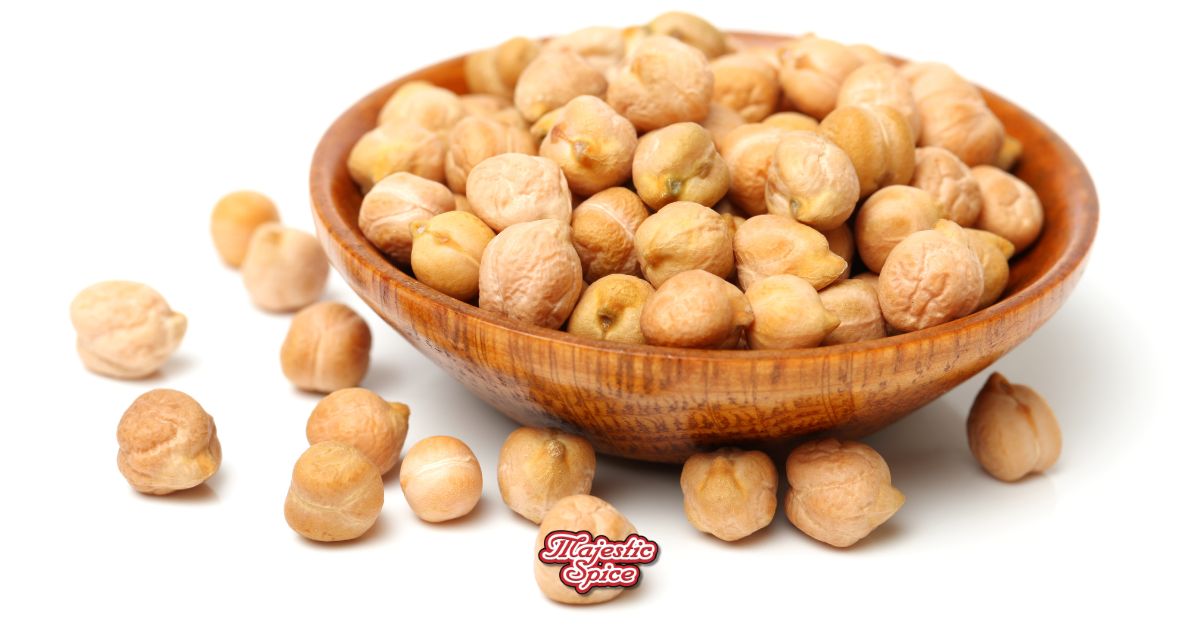
In August 2025, chickpea markets are running hot. Prices in India – the world’s largest producer and consumer – have reached record highs, and while that might sound like a local issue, the ripple effects are global.
For U.S. bulk buyers, this creates both challenges and opportunities. Here’s what’s happening, why it matters, and how it could shape your purchasing strategy for the months ahead.
India’s Prices Are in the Stratosphere
India’s wholesale chickpea prices have climbed to USD 8.43–8.79/kg (around $8,430–$8,790/MT) in key producing states like Maharashtra and Karnataka. For context, retail prices in India for everyday consumers sit at $2.80–$3.30/kg, showing just how inflated the wholesale market is right now.
Why so high?
- No new crop until spring 2026 – Chickpeas in India are a winter crop, harvested in March–April. Until then, the market relies entirely on stored stocks.
- Production shortfall – India’s 2025 output is estimated at ~11.34 million MT, slightly below last year.
- Strong local demand – Even small purchase inquiries are pushing prices up due to thin availability.
- No pressure to sell – Stockholders are holding back inventory, expecting prices to rise further.
Despite prices that are 5–10× higher than other origins, buyers in India aren’t walking away. Chickpeas are a staple protein source, and food processors, snack manufacturers, and millers continue to buy steadily to keep production going.
Global Price Comparison – August 2025
| Origin | Approx. Price | Notes |
| India (wholesale) | $8.43–$8.79/kg | Tight stocks, no new arrivals until 2026. |
| Turkey (export) | ~$1.00/kg | Drought cut 2024 crop by 20%, but still exporting 358k MT last year. |
| Australia (farm/export) | ~$0.70/kg | Huge exports to Pakistan/UAE; new harvest starts Oct–Nov. |
| Canada (farmgate) | $0.80–$0.84/kg | 453k acres planted; harvest in Sept–Oct. |
| USA (wholesale) | $0.80–$1.00/kg | Kabuli crop doubled in 2024; exports expected to rise. |
For a U.S. buyer, the takeaway is clear: India’s shortage is inflating global sentiment, but competitive prices still exist in other origins.
Demand Isn’t Slowing Down
The global appetite for chickpeas is strong:
- Pakistan is projected to import ~730,000 MT in 2025/26 – nearly double last year.
- Bangladesh is forecast at 340,000 MT, up 50% year-on-year.
- Even at $1,500/MT for premium 42/44 count Kabuli chickpeas, buyers are signing contracts.
This demand pull is keeping export offers from Turkey, Australia, and North America firm, even if their prices are nowhere near India’s.
Why This Matters for U.S. Bulk Buyers
The U.S. has an advantage this season:
- Production doubled in 2024 to about 472,000 MT.
- Ending stocks could jump from 60,000 MT to 230,000 MT if exports don’t accelerate.
- Spot prices are still under $0.65/lb (~$1.43/kg) on average – much lower than global highs.
But the surplus won’t necessarily keep prices low forever. If Indian buyers or other importers turn to the U.S. for supply in Q4, domestic prices could firm quickly.
Outlook – What to Expect Through Early 2026
- Short term (Aug–Dec 2025):
Prices likely stay firm globally. India’s shortage keeps market sentiment bullish. Australian and Canadian harvests will be the big watch – good yields could cool prices; poor yields will keep them hot. - Medium term (Q1 2026):
If Australia, Canada, and the U.S. deliver large crops, global prices could ease to $750–$800/MT. But any weather problems or sudden import surges could reverse that quickly.
Buying Strategies for U.S. Importers & Traders
- Lock in supply from surplus origins – Canada, the U.S., and Turkey currently have the most stable pricing.
- Diversify sourcing – Don’t rely on a single origin. Weather and policy shifts can change the game overnight.
- Watch India’s policy – A sudden import duty cut or government stock release could shift trade flows fast.
- Monitor freight routes – Costs via the Red Sea and other key corridors have risen by ~$50/MT, which impacts landed costs.
- Buy dips – If Australian or Canadian harvests come in strong, there could be short-lived buying opportunities in Q4.
Bottom line: For now, the U.S. is in a sweet spot with ample supply and prices well below global highs. But with India’s situation so tight and other buyers ramping up imports, waiting too long could mean paying more later.
